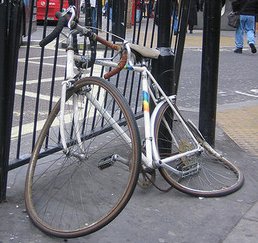Strive for perfection in everything you do. Take the best that exists and make it better. When it does not exist, design it.
~Sir Henry Royce
This blog is about sustainability. We can define sustainability as the right balance of a triple bottom line: Economic profit, social profit, and environmental profit. I have been focusing in the environmental profit because it is the one that is more urgent to address; the other two can be closely related (social and economic development can go hand by hand) but usually the environment receives all the cost of this development.
Global Warming is, by far, the most urgent matter of all the environmental issues. It is urgent because:
Some people have not yet realised the long-term effects of a raise in average temperatures.
Some people do not even recognise that Global Warming exists.
Unlike other pollutant, CO2 remain in the atmosphere for hundred of years, while is reabsorbed at a very slow pace.
Victor, Granger Morgan et al compare the emission-reabsorbsion problem as having a bathtub with a huge faucet but a very small drain. The only way to reduce the amount of greenhouse gasses is to dramatically reduce the size of the faucet, but whatever measure we may take in reducing the greenhouse gases emissions, the result will come decades later, hence the urgency to take measures now. The United States has been incapable to even cap their emissions, let alone reduce them. China has surpassed the USA as the main greenhouse gases producer, and the developing countries are just not going to stop producing the relative cheap fossil energy.
While efforts need to continue to reduce CO2 emissions, we need to try to reverse the effects. Geoengineering could provide a useful defense for the planet, an emergency shield that could be deployed if surprisingly nasty climatic shifts put vital ecosystems and billions of people at risk. Geoengineering is not a new idea, since the 1940s the USA and the Soviet Union experimented in seeding clouds to make rain and to reduce hurricanes power (with very poor results). Volcano eruptions, like the one in Philippines in the early 1990s, reflected so much sunlight that global temperatures dropped 0.5C in less than one year.
It works like this: 70 percent of the earth’s incoming sunlight is absorbed while the remainder is reflected back into space. Increasing the reflectivity of the planet (known as the albedo) by about 1% could have an effect on the climate system large enough to offset the increase in warming that is likely over the next century as a result of a doubling of the amount of CO2 in the atmosphere. This is easier than causing rain in a particular location because it is not a fine tool: it is a blunt instrument that affects the whole planet, and that is exactly what we want.
Geoengineering techniques are divided in two: Removing the CO2 (e.g. fertilizing the ocean with nutrients that would allow plankton to grow faster and absorb more carbon, or scrubbing the air with cooling towers) and increasing the earth’s albedo. The latter are more promising: one kilogram of sulphur placed in the stratosphere would offset the warming effect of several hundred thousand kilograms of CO2, or seeding bright reflective clouds by blowing seawater into the lower atmosphere. “There is a general agreement that the strategies are cheap; the total expense of the most cost-effective options would amount to perhaps as little as a few billion dollars, just one percent (or less) of the cost of dramatically cutting emissions”.
This do not offset the importance of reducing C02 emissions, since reflecting the sun light does not reduce the already dangerous C02 concentration that is ending up in the oceans, killing coral reef and creating maritime dead zones. Altering the albedo will have some consequences, like changing the rain patterns (as learnt during volcanic eruptions), but the difference is that we can stop increasing the albedo, since Geoengineering requires constancy, Global Warming effects are, in the other hand, long term, and far more dangerous.
When you have Cancer you undergo chemotherapy, but you also take painkillers. Chemotherapy is the cure, is expensive, uncertain, and long term. Painkillers are a temporarily measure, cheaper, reasonably predictable, and a short-term solution. You need both to get cured, similarly, just trying to lower our present emissions is expensive, uncertain, and many nations just do not care. It needs to be done for sure, but in the meantime, they are options to reduce the risk and effects of Global Warming.
Furthermore, it only takes one powerful, decided nation to conduct a Geoengineering experiment. The literature and the scientifics studying this discipline is scarce, and further study may reveal that Geoengineering is just too dangerous; messing with the atmosphere is surely to be a shocking idea for the most of us, but we have already engage in a dangerous Geoengineering experiment by pumping massive amounts of CO2 into the atmosphere. The best and safest solution is to stop greenhouse gases emissions, but this will take time and consensus among countries with very different political and environmental views (remember, it is China and the USA talking about deep economic changes) As with particles accelerators, nanotechnology, and genetic engineering before, it is time to set regulations and rules to explore the idea that one day, the nations of the world may need to erect a shield to protect our mother land.



 Posted by mcyclops
Posted by mcyclops 


